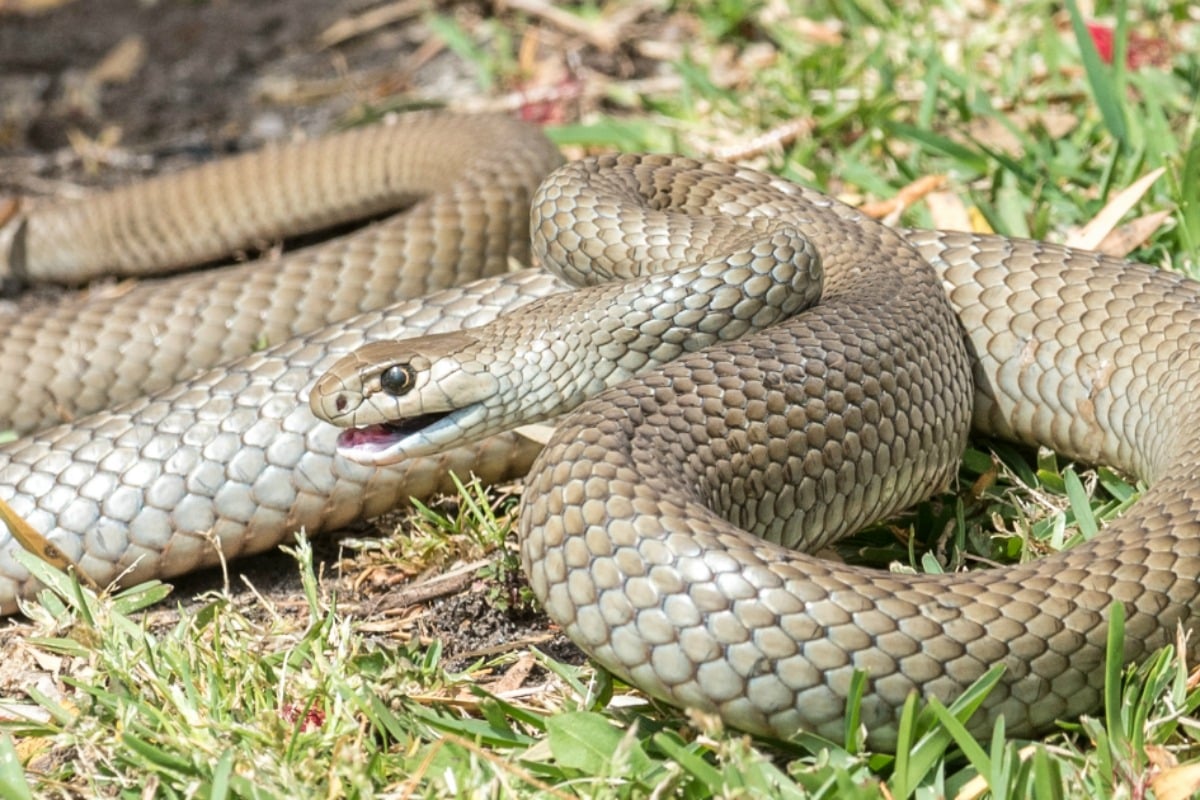
– With AAP
Following three snakes bites in six hours overnight in Queensland, a QAS spokesman has issued critical instructions on what to do if ever bitten by one of Australia’s venomous snakes.
The advice itself may seem counterintuitive, but is the key to ensuring medical staff can issue the correct antivenom.
Don’t wash the wound, the spokesperson said, as the hospital will need to test the bite area to identify the snake to administer the appropriate venom.
His other instructions were to be cautious when walking in snake habitats, and to avoid shifting items snakes could be under or in.
As snake bites can be fatal, people are urged to seek hospital treatment if they are bitten, the QAS spokesman said.
Queensland specifically is home to some the most dangerous species of snakes, including the lethal eastern brown and red-bellied black snakes.
The state has experienced a surge in bites, with two men in their 70s and a teenage girl all taken to hospital in stable conditions for the bites, that occurred in the north and south of the state.
A warmer than usual summer and growing Queensland population are most likely behind the surge in bites, Queensland Ambulance said on Saturday.
To November 30, there were 817 snake bites statewide for 2018.
Up from 2016 when there was 739 for the calendar year and 2015 and 2014 when there were 658 and 654 bites, respectively.
Statewide in November, there were 100 snake bites, up from October’s 82 and September’s 52 bites.
“It’s business as usual for us, I don’t think it’s a spike but the statistics over the past few years show it is slightly higher,” a QAS spokesman told AAP on Saturday.
“It’s been warmer than previous years and that could be a factor.”
There was no Queensland Ambulance snakebite statistics available for December 2018 or 2017.

Top Comments
More snake bights because it's been hotter than usual? Perhaps it's because they are a protected species that can't be culled.
This is great, but some further information for people on what to do if bitten would be good too, such as form a tourniquet to try and stem the blood flow to the bitten area, so the poison doesn’t move as quickly through your system. The more information the better to educate people who find themselves in this unfortunate situation.
You need to brush up on snake bite treatment as tourniquets should never be used and their use have not been advocated for many years. If bitten on the leg or arm, the affected limb needs to be bandaged and splinted if possible, Try and remain as still as possible (although easy to say this). There are many Australian websites with up to date info on the treatment of snake bites and why tourniquets should not be used.
I agree that more information is definitely a good idea. Venom travels in the lymphatic system, NOT the blood. The lymphatic system generally drains from the extremities with movement of the muscles. As such, first aid for a snake bite is as follows - stay still, call/yell for help, use pressure immobilisation technique. Do not cut or wash the bite. Bandages can be applied over clothing. If you have multiple bandages first apply one directly over the bite and slightly above and below the bite. Then apply a second bandage from the extremity of the limb as high up as possible. Use as many bandages as you have available to get as high as possible on the limb. They should be as firm as you would bandage a sprain. If you do not have a bandage use clothing or similar in the same manner as described above. Do NOT use a tourniquet. You do NOT need or want to cut off the blood supply to that limb. Mark the position of the snake bite by drawing on the bandage and write the time the bandage was applied on the bandage. Immobilise the limb. If bitten on the torso or elsewhere that does not allow the application of a bandage, then apply pressure (if sensible) and stay still and stay calm. Let help come to you. An overwhelming majority of snakes bites are dry bites (no venom) but all should be treated as if envenomation has occurred. Stay calm and get help.